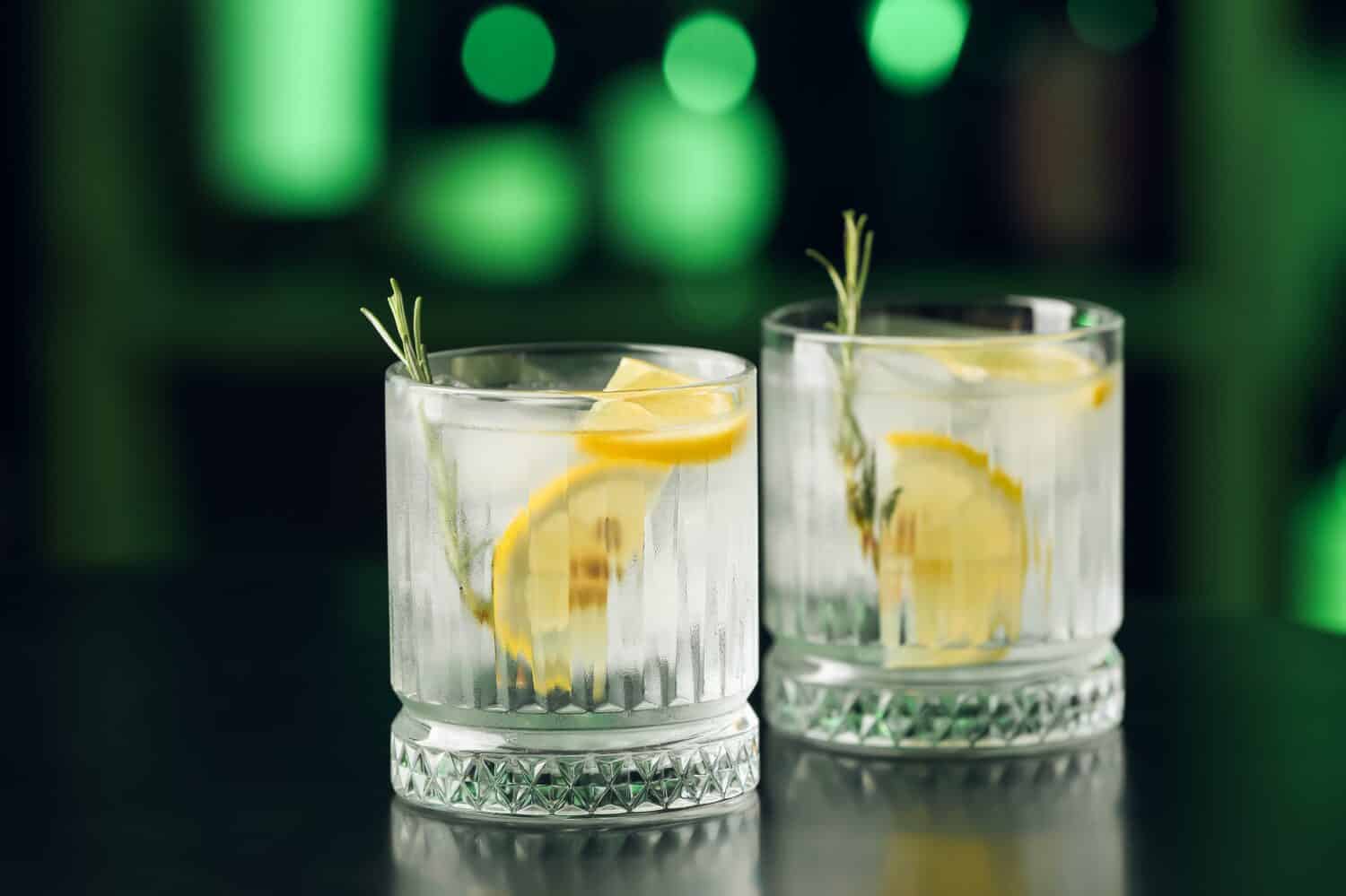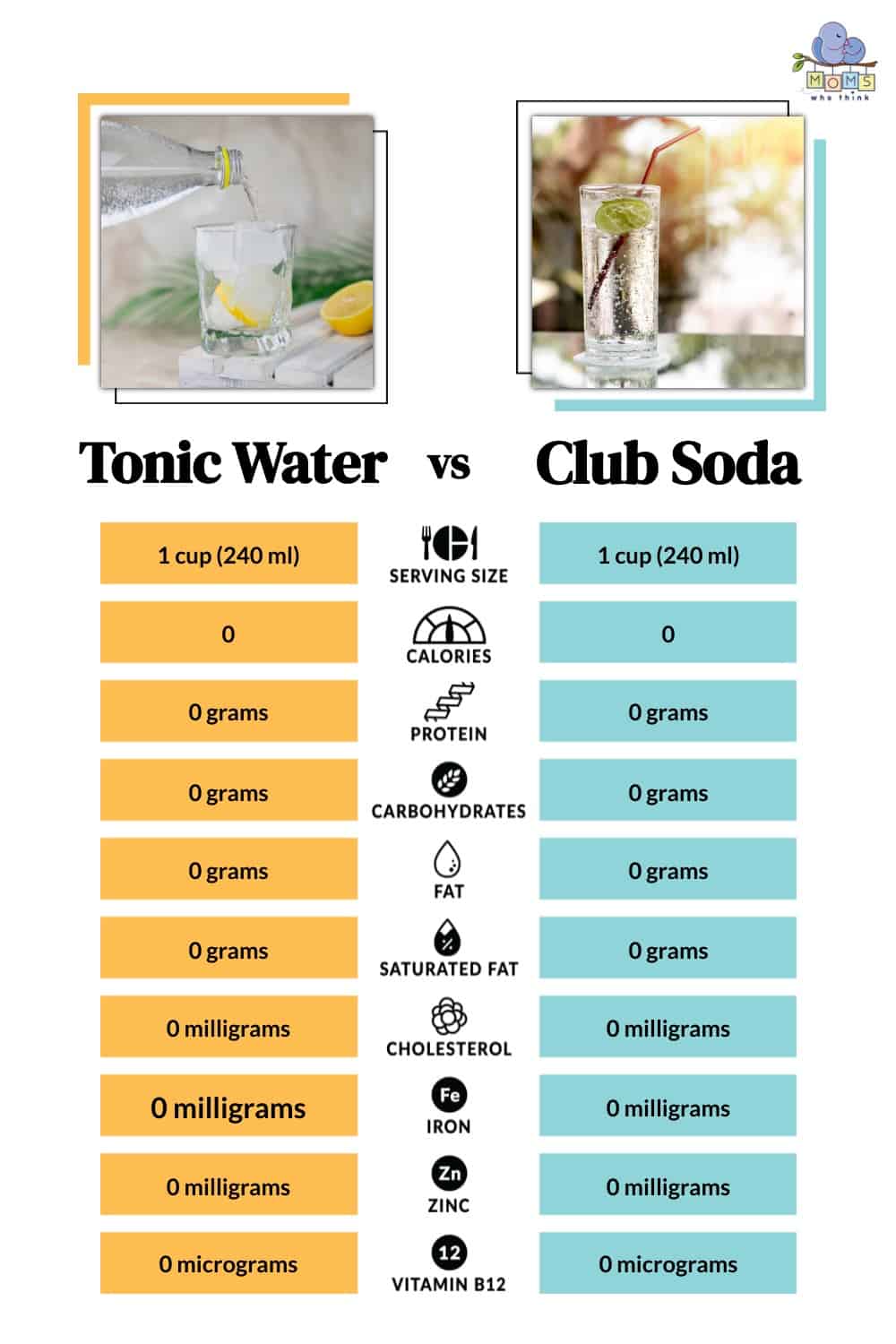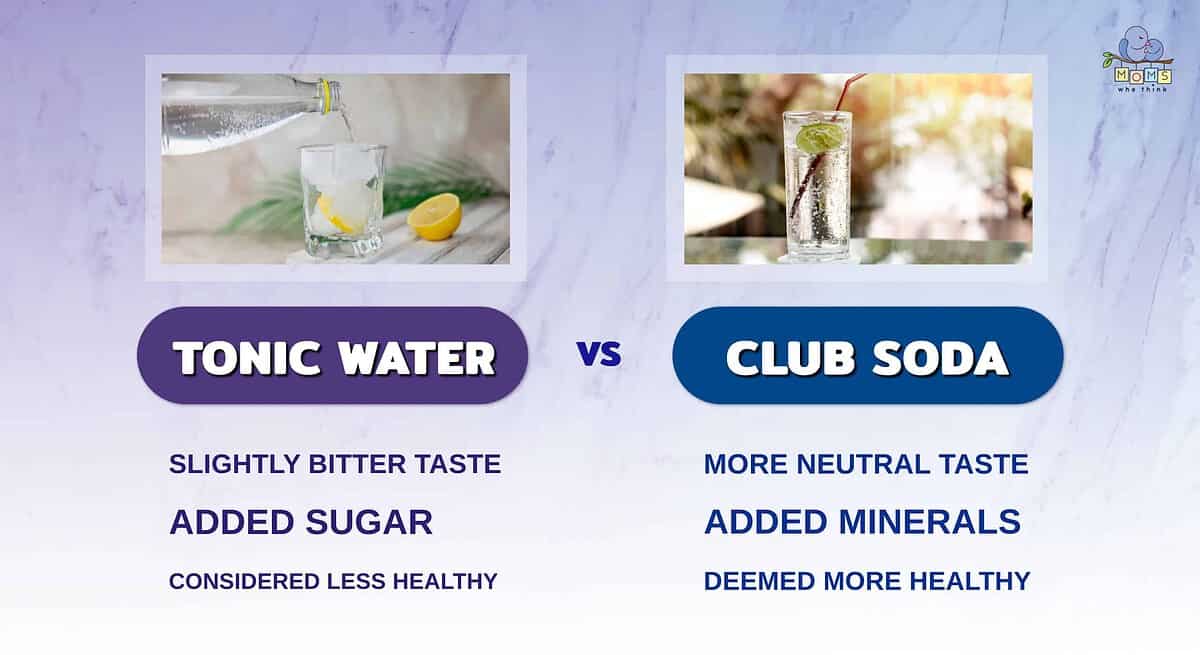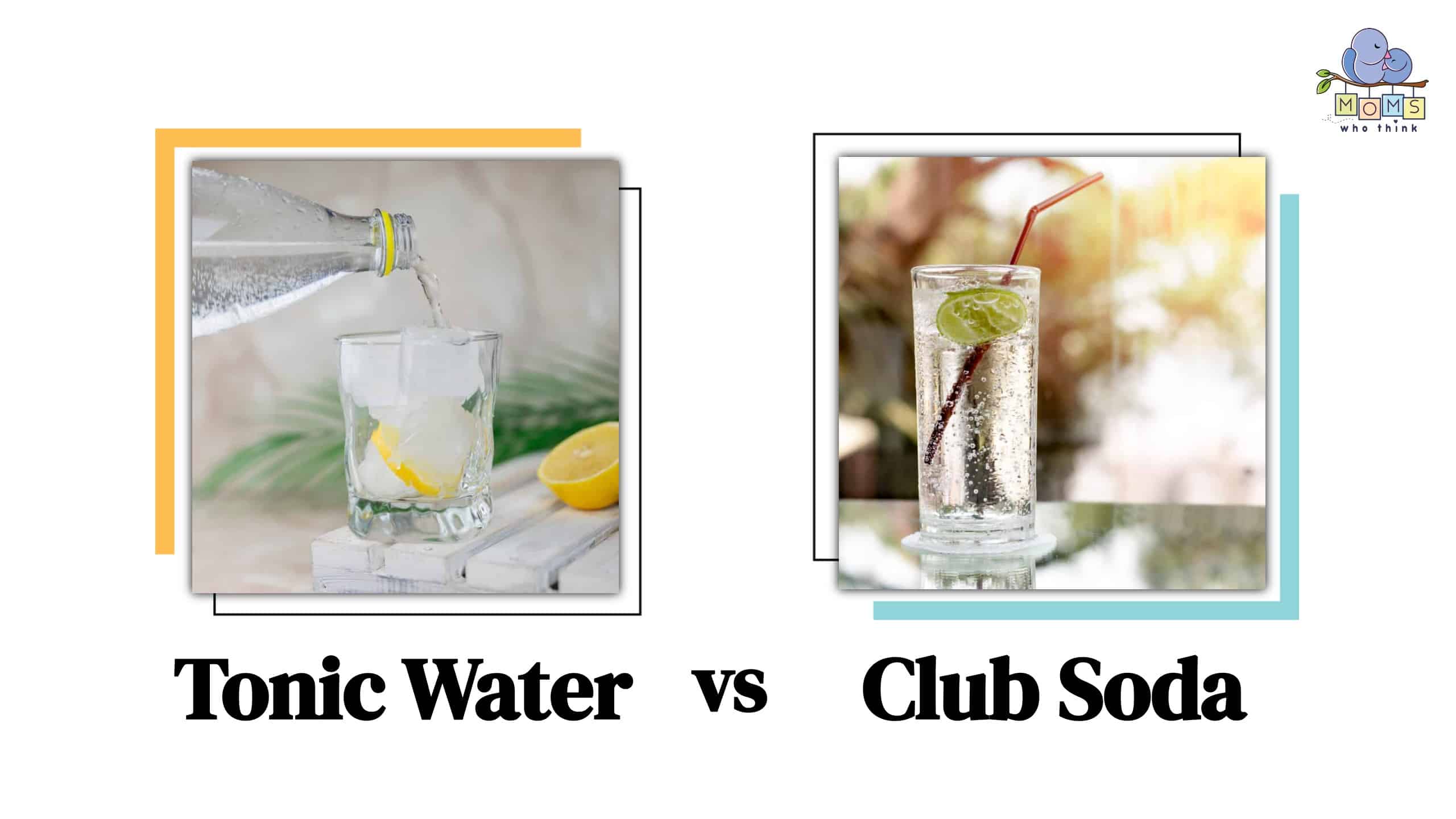Unless you're a bartender, you may find tonic water and club soda identical. After all, both beverages are carbonated and add the perfect amount of bubbly fizz when added to mixed drinks or poured over ice. However, tonic water and club soda actually have quite a few differences.
Club soda, for instance, has a neutral taste, making it a great fizzy finish to drinks. Tonic water, on the other hand, has a slightly bitter taste that comes from the addition of quinine, which is derived from the bark of the cinchona tree.
To the naked eye, tonic water and club soda look exactly the same. Let's take a closer look at what sets these two popular carbonated beverages apart.
What is Tonic Water?
Tonic water is essentially carbonated water flavored with quinine. Quinine comes from the bark of the cinchona tree, which is found in South America. It's what gives tonic water its signature bitter taste. The beverage also has added sugar to dilute the bitterness.
Interestingly, tonic water was originally created to combat malaria, but we'll dive into the history of the beverage in a moment. Today, tonic water is popular for its use as a mixer in a variety of cocktails, most famously the classic gin and tonic. Tonic water can also be consumed by itself, though most people find the bitter taste unpleasant.
What is Club Soda?

©Ash Pollard/Shutterstock.com
Club soda is plain water that's been carbonated and then infused with minerals. It's sometimes called soda water or seltzer and is sometimes used as a generic term for carbonated water. While club soda's flavoring is mostly flat, added minerals like sodium and potassium can give the beverage a slightly salty taste. The amount and type of minerals added depends on the manufacturer.
Additionally, club soda is known for its many uses in cocktails. Because of its neutral flavoring, it can be used in drinks that include vodka, whisky, tequila, and even scotch. Adding club soda to a mixed cocktail can give the drink just the right amount of fizz.
Tonic Water vs. Club Soda: What are the Differences?
While tonic water and club soda look the same, take one sip, and you'd quickly realize the difference. Besides the initial flavor contrast, there are a few other things that set tonic water and club soda apart. Let's take an in-depth look at the four key differences between these two fizzy beverages.
Origin
Tonic water and club soda have two very unique origin stories. As we know, tonic water includes quinine which comes from cinchona trees in South America. According to MindBodyGreen.com, it was discovered in the 17th century that cinchona tree bark was an active aid in fighting milera when there was no known cure. It was later discovered that it was the quinine in the bark that was useful in fighting malaria, and the extracted compound made its way to Europe.
Quinine's extremely bitter taste, however, was hard to digest. To dilute the bitterness, water, and sugar were added. This is how tonic water was born. Quinine tablets or injections are still used as an alternative treatment for malaria to this day and are also useful in reducing muscle and leg cramps. However, too much ingestion of the compound can cause negative side effects. Rest assured that there are minimal levels of quinine in tonic water, and it's completely safe as manufacturers have to follow FDA standards.
While tonic water has a much longer history, club soda's origins only date back to 1877 in Dublin, Ireland, according to CulinaryLore.com. The term club soda is actually a trademarked name in Ireland and Britain by the company Cantrell & Cochrane, who manufactured the drink and named it after the Kildare Street Club in Dublin.
Carbonated water itself had been around long before club soda was invented, though. Joseph Priestly, a scientist from England, discovered how to add carbon dioxide to water in 1767, according to an article from McGill University. His discovery led to the popularity of carbonated water. When Cantrell & Cochrane made club soda, they simply added minerals to the already invented carbonated water.
Taste
The primary difference between tonic water and club soda is the taste. As mentioned, tonic water is known for its signature bitter flavor. It can also be slightly sweet with its addition of sugar or other sweeteners that help to dilute quinine's distinct bitterness.
Club soda, on the other hand, has a very neutral taste with a slightly salty flavoring depending on what minerals were added by the manufacturer. It tastes more like carbonated water than anything flavored.
Ingredients
While tonic water and club soda contain carbonated water, the similarities in ingredients end there.
Tonic water obviously has quinine, while club soda does not. Tonic water also has added sweeteners like sugar or high fructose corn syrup. Club soda, however, does not contain either the bitterness of quinine or the sweetness of added sugar. But it does have added minerals like potassium sulfate, sodium chloride, disodium phosphate, or sodium bicarbonate, according to BinWise.com. These minerals are then combined with water that's been infused with carbon dioxide to create club soda. The minerals used vary by manufacturer.
Use in Beverages

©Pixel-Shot/Shutterstock.com
Due to tonic water's signature bitter flavor, this carbonated beverage is best used in only certain cocktails. Its unique taste makes it a great addition to gin or vodka, creating the classic gin and tonic or vodka tonic cocktails.
On the other hand, club soda's mild flavoring allows it to be used in an incredible amount of beverages. Club soda is popular for its use in adding fizz to any drink without altering the flavor. Not only can it be poured over ice and consumed by itself, but the beverage is also used in cocktails like the Tom Collins, mojitos, vodka sodas, and gin rickeys.
Tonic Water vs. Club Soda: Nutritional Value
One substantial difference between tonic water and club soda is its nutritional value. Due to the addition of sugar in tonic water, this beverage is generally seen as a less healthy option. In fact, the Cleveland Clinic reports that one can of tonic water can even have as much sugar as a can of soda.
Club soda, on the other hand, has no sugar and no calories since it's simply carbonated mineral water, so it's often seen as a healthier option.

Can you Substitute Tonic Water for Club Soda?
As we've seen here, tonic water and club soda have many differences. Because tonic water has a bitter taste and the inclusion of sugar, it doesn't make a great substitute for club soda as it can affect the overall flavor of your beverage. However, club soda can work in place of tonic water; just consider the fact that it will remove any bitter flavoring.
There are substitutes for each of these carbonated drinks, however. Tonic water can be a little tricky to replace, but as mentioned, club soda can do the trick. If you're looking for a healthier option to tonic water, also try adding bitters and lemon or lime juice to club soda. This concoction eliminates tonic water's added sugar.
If you're in need of club soda but don't have any on hand, try seltzer water. It's almost identical but without the salty taste of the addition of minerals. Sparkling water or ginger ale can also work in a pinch.
Which One is Best in Cocktails?
Ultimately, the decision on whether to use tonic water or club soda depends on what type of cocktail you're mixing up. Tonic water's bitterness mixes well with gin and vodka. Club soda is more neutral and adds a little pop of fizz to almost any mixed drink. In the end, while these two carbonated beverages seem similar, they are not the same. Using the right one in your next cocktail can make all the difference.
Comparison of Tonic Water vs. Club Soda

While both tonic water and club soda or great ed when used in cocktails, there are distinct differences between the two beverages. The appearance may be the same; however, the taste sets them apart. Let's take a look at some of the differences between tonic water and club soda:
- Tonic water has a more bitter taste, thanks to the addition of quinine. In contrast, tonic water is more neutral in taste.
- Club soda has the addition of minerals to give it that clean taste, and tonic water uses sugar to balance out the bitterness.
- While only slightly healthier, club soda is considered to have fewer calories than tonic water.

Watermelon Mojito with Club Soda
- Yield: 1 serving 1x
Ingredients
- 4 mint leaves
- 1/2 lime
- 1 tablespoon superfine sugar
- 1 cup seedless watermelon, cut into 1/2-inch cubes, plus a small wedge for garnish
- 2 ounces white rum
- 1/2 cup ice cubes
- club soda
Instructions
- In a medium-sized glass, add mint, lime juice, and sugar and crush with the back of a spoon.
- Add the watermelon and continue to crush.
- Pour the rum over the mixture and add ice. Top with a splash of club soda.
- Garnish with a small watermelon wedge and serve.


